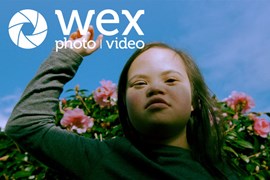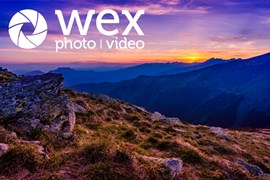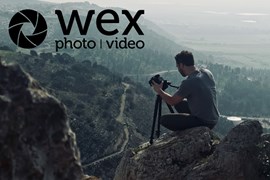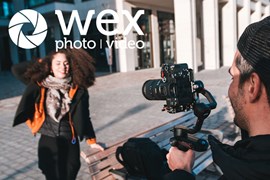
Matthew Town is an accomplished still life advertisement photographer who has developed a clear and unique style resulting in collaboration with major brands including Adidas, Rolls Royce, Grand Marnier and many more.
Each image produced demonstrates Matthew’s meticulous attention to detail and advanced understanding of studio lighting. While primarily led by commercial clients’ needs and requirements, there is a playfulness that shines through - a personality to his imagery that is his signature blend of creativity and precision.
We contacted Matthew to have a chat and gain insight into his photographic journey and creative processes. We also asked for any industry advice he may have for aspiring photographers.
Leo White: Can you tell me about your photography background and experience in commercial advertisement photography?
Matthew Town: Well, my photography journey is similar to many others. Art was always a creative outlet but without direction, it can be difficult to channel it. Fortunately, with some encouragement, I pursued an Art Foundation course at Reading TVU and this was possibly the best decision I ever made. That course helped me explore my passions and led me on my photographic path.
Later, after graduating from the Arts University Bournemouth with a degree in Commercial Photography, I had confidence in my abilities and experience using professional studio equipment.
Knowing full well that if I moved back home, I most likely would never become a working photographer, I moved to London and got myself a full-time studio assistant job at Sunbeam Studios. The days were long and the money was terrible, but the first-hand experience was invaluable. I saw all types of photography and lighting setups and took in as much as I could. I would do test shoots where I’d re-create the lighting and figure out what worked.
Sure, if the production team knew I was doing that, they would probably have kicked me out. But, I figured the countless teas and coffees I made and errands I ran were suitable justifications.

LW: How do you approach creating a visual concept for an advertising campaign?
MT: Generally, the concepts for advertising campaigns aren’t created by the photographer - They are developed by the advertising agency who then find a photographer whose visual style fits their concept. If I am commissioned, I will then work with them on the “art direction”. This can involve suggesting treatments for the images and/or potential image compositions - which set designers, stylists etc. to hire for the shoot.
A lot of agencies work differently depending on their size or experience. I have found that less experienced agencies tend to give a bit more creative freedom as they want to be led by the photographer. I have found that they are often looking for guidance and to be shown the processes of how a still life shoot works.
The positive spin on this is that you can direct the shoot to your style but also, it can negatively impact the shoot if the photographer needs guidance on an aspect of the creative direction but there’s a lack of experience.

LW: How do you ensure that the images you capture align with the client's brand and message while also maintaining your artistic style and vision?
MT: Typically, you are booked because your style fits the agency’s creative direction. However, I’ve learned that for me, it's not always that I'm the best fit stylistically for the job, but that I have built a level of trust with agencies and I am hired because I can consistently deliver high-quality images whatever the brief.
Preparing for either scenario starts with getting familiar with the client’s message, ethos and brand etc. Agency creatives will guide me through the creative direction to give me a full understanding of each decision.
It’s not uncommon for those creatives to disagree or dislike the creative direction chosen by the client and gently redirect, but it’s always important to be as close to the original brief - after all, it is the client who pays the fees. Equally, If I'm worried that the creative is moving too far from my style, then I may decide to push back on certain creative decisions if I feel it would benefit myself and the client.
There are times when a potential shoot may not benefit my portfolio and in those cases, I'm happy to let the agency dictate most parts of the shoot. But, if the images will sit well in my portfolio, I may try to push the creative to suit my style - I call this situation a money job vs a portfolio job.

LW: Can you walk us through your process for preparing and conducting a photo shoot for a commercial advertisement project?
MT: Once I’ve been hired, I can then start putting my team together. Set designers are up first - I have a select few that I work with based on the type of shoot. Set designers are integral for the shoot and all future shoots as you’ll generally secure your next job based on the look and success of previous work. Relationships in photography are the key to being successful.
Next, your assisting team. I generally have one or two lighting assistants and one digital technician. The bigger the shoot, the more assistants you have to ensure everything runs smoothly.
I shoot most of my work in my studio and do not usually have to hire a lot of kit. This all depends on the shoot and should I require specific lighting I cannot create with my setup, I’ll hire it in. I often call on advice from my lighting assistant if I want to talk through the setup - some photographers can be solo-minded or barely let assistants have suggestions but I feel that everyone can have an opinion. It's up to me whether I take it or not.
Before the shoot, I will discuss the composition with the set designer and if the budget allows, I may do a test shoot if I am shooting a product or lighting I’ve not worked with before. While I generally do not do test shoots, it’s a photographer's worst fear to shoot something you don't feel prepared for. Fail to prepare or prepare to fail!

LW: How do you handle unexpected challenges that may arise during a photoshoot?
MT: I am most calm when it comes to the actual image-taking. In my mind, all the hard work is already done - it’s then just a matter of taking the photos. That said, unexpected challenges can and do arise during the shoot and the best way to deal with them is to stay calm and take a moment to understand the issue.
Be proactive. Talk it through with your assistant or set designer. Try to solve any issue before informing the client unless absolutely necessary. If you have a close relationship with a client, then you may feel open enough to chat freely with them as opposed to if it was your first shoot with them. It all depends on your relationship with the client.

LW: Can you give an example of a project you worked on where you had to come up with a creative solution to a problem?
MT: Still Life photography as a concept, is a problem-solving activity. When you have props and a tricky product to light, you are constantly testing, checking and tweaking the scene and/or lighting until you achieve what you are looking for.
An example of a creative solution to a problem occurred when I was doing a shoot for Adidas. The trainers were supposed to glow in the dark and the images needed to clearly demonstrate that feature. Usually, this would be fine as it's not too tricky to shoot glow-in-the-dark products - you just need a pitch-black studio, a tripod and a long exposure.
However, in this scenario, when testing the lighting for the shoes we quickly realised that they actually didn't glow in the dark. We had been sent a pre-release sample - not the finished product. This left us with the issue that we still needed to shoot the trainers and show that they glowed in the dark even though they didn’t.
The lazy - albeit still time-consuming - option would be to edit it in post. Or worse, contact the client and say that it can't be done.
But on this occasion, experience and technical know-how took over. I had an idea to create an illusion of glow-in-the-dark trainers using a light painting. I used a piece of green neon perspex over the front of a torch in a pitch-black studio. Selected a long exposure, and processed to go around the trainer painting in the parts that are meant to glow. That probably sounds as though it would be a disaster, but after several attempts, we managed to achieve what we wanted. There was no delay and therefore we kept the client happy, and to be honest I think it came out really well.

LW: How do you stay current with trends and advancements in the commercial advertisement photography industry?
MT: I tend not to worry about current industry trends. Each brief that comes in will reflect the current trend, so naturally, your new work will just slot into that ‘trend’.
Generally, I think that trying to mirror what you see online is bad practice. The work you create may be less unique and may not stand out. That said, this industry isn’t one-size-fits-all
I feel that the industry hasn't advanced; it's just you have a hell of a lot more photographers to compete with. YouTube is such a hub of knowledge and people can easily follow How-to product photography videos, or even be influenced by TikTok photographers. All of which saturates the number of creatives even more.
Something that has changed is that now, Instagram and TikTok are the main focus for brands. Photographers have to appreciate that the work they will spend days shooting and retouching will only be seen on the screen of a phone and, because of this, the quality of imagery will go down and shot count on shoots will go up.

LW: Do you have any advice for those wanting to pursue a career in commercial photography? Have there been any pitfalls along your journey?
MT: I remember when I was a photography student and every guest lecturer who visited to talk through their work and share some ‘wisdom’ would generally advise us to pick another career.
Photographers through the 70s/80s/90s had the good fortune of being a photographer when the industry was ridiculously lucrative and they were bitter that they couldn't demand the same rates in the present day.
My point is, you should never pursue something purely for the money. If you genuinely love doing something, the money will come. That old phrase “find something you enjoy doing and you won't work again” is kind of true - it’s just difficult and frustrating at times!
Just keep creating the work you love.
Be sure to visit Matthew’s website and explore his Instagram feed.
Check out our interviews...
Buying Guides








